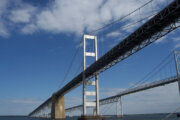Oversold stocks are equities that have been out of favor, trading at lower prices than their fair value, and may be due for a price bounce. Momentum traders sometimes try to profit from this rally by buying an oversold stock, then selling it after the price increases.
Analysts use different indicators to determine if a stock is oversold. Some prefer the price-to-earnings (P/E) ratio, which indicates how much investors are paying per dollar of earnings and is frequently used to spot undervalued stocks. An alternative to P/E is the price-to-sales (P/S) ratio, which can also indicate an undervalued stock. In both cases, the lower the ratio, the more attractively priced the stock.
[Sign up for stock news with our Invested newsletter.]
Another metric for identifying oversold stocks is the relative strength index (RSI), which measures how fast and to what degree a stock’s price is moving. RSI varies from zero to 100, with most analysts considering an RSI of 30 or below to be oversold territory, while anything above 70 indicates a potentially overbought stock.
RSI is used in the short term, and the numbers change daily. As a result, the RSI on the following stocks may change from the time of this writing. Investors should pair these indicators with their own fundamental analysis before investing.
That said, here are five oversold stocks to watch in July:
| Stock | Implied upside (as of June 16 close) |
| Estee Lauder Cos. Class A (ticker: EL) | 24.1% |
| Hibbett Inc. (HIBB) | 69.8% |
| Agilent Technologies Inc. (A) | 24.7% |
| Waters Corp. (WAT) | 20% |
| AT&T Inc. (T) | 55.7% |
Estee Lauder Cos. Class A (EL)
Global beauty products producer, Estee Lauder “has been hit hard by slow travel retail,” but maintains a strong long-term growth projection, according to Morningstar senior equity analyst David Swartz. He says its wide moat from a strong competitive position alongside investments in marketing and innovation are helping the company combat inflation and supply chain disruptions.
EL’s RSI dropped to just over 20 on May 4 and has since been bouncing around the mid 20s to low 30s. As with most stocks, the RSI for EL rose the week of June 12, fueled by renewed investor optimism following announcements that the Federal Reserve may skip its next rate hike. But still in the low 50s, it remains well below overbought conditions.
EL’s P/S is 4.09, below that of top competitors L’Oreal SA (LRLCF) at 5.69 and LVMH Moët Hennessy Louis Vuitton SA (LVMUY) at 5.33. When a stock has a P/S ratio lower than its competitors, this can be an indicator it is undervalued in its industry.
Morningstar gives EL four stars and a fair value estimate of $253, which closed at $203.95 on June 16.
Hibbett Inc. (HIBB)
Hibbett Inc. is a sports retail store located in parts of the Midwest and Southern U.S. It has an impressively low price-to-earnings ratio of around 4, indicating investors are only paying $4 per dollar of earnings, a good sign of an undervalued stock. The company also has a pretty strong return on equity, or ROE, of around 35%, which is above the average of around 24% for the specialty retail sector.
HIBB’s RSI just surpassed 30 on June 12 for the first time since mid May. It had been in the teens for the first few days of June.
Morningstar analysts consider $64.94 to be a fair value for HIBB, which closed at $38.24 on June 16. Morningstar gives it four stars but would raise that to five stars if the price drops to under $37.28.
[See: 7 Best Solar Stocks to Buy Now]
Agilent Technologies Inc. (A)
Agilent’s RSI has been on a downward trend since the start of the year when it peaked at about 63. It dropped to 26.55 on June 8 and has since bounced back to in the 40s. It also has a reasonable P/E of 26.67.
The analysts also give it a wide economic moat rating, suggesting they believe it has competitive advantages that should keep competitors in the life sciences and lab work sector at bay for at least 20 years. This moat is based on both tangible testing tools, including in chromatography and mass spectrometry, as well as intangible assets, such as intellectual property and ongoing innovation.
“Both moat sources are crucial to Agilent’s ongoing advantages in its target markets, and with these advantages, Agilent enjoys strong returns on invested capital including goodwill of more than double its capital costs, by our calculations,” writes senior equity analyst Julie Utterback.
Agilent also has an exemplary capital allocation based on a strong balance sheet and exceptional investment strategy. “These practices should help Agilent generate economic profits for the long run and allow shareholders to participate in that performance,” Utterback writes.
Morningstar gives A four stars. Morningstar considers A to be trading at well below its fair market value of $151, which closed at $121.13 on June 16.
Waters Corp. (WAT)
Medical technology provider Waters Corp.’s RSI recently dropped below 30 last month but was trending upward as of June 20. The company recently increased its fair value estimate after lowering its cost of equity assumptions for the company to be more in line with peers.
“The durability and diversity of these life science businesses often do not come cheap from a stock valuation standpoint, but after the pandemic boom years, life science financial results started resetting in late 2022, causing shares to drop from recent peaks to reasonable, if not deeply discounted, levels,” Utterback writes. “Currently, we think shares are suffering from market myopia during the 2023 reset.”
She believes that profit growth will normalize in 2023 and beyond, leading to growth opportunities for long-term investors.
WAT has a reasonable P/E of 22.92. It gets a wide moat and exemplary capital allocation rating, plus a four-star rating from Morningstar. Morningstar gives it a fair value estimate of $323, which closed at $269.20 on June 16.
AT&T Inc. (T)
While some have expressed concern for the fate of wireless carriers on the heels of Amazon’s announcement that it may enter the wireless resale business, Morningstar director Michael Hodel remains optimistic about the future of national carriers like AT&T.
“We believe the industry is positioned for competitive rationality thanks to the parity that has emerged among the three national carriers, which limits the incentives to chase market share,” he writes.
AT&T has an attractive price-to-sales ratio of 0.95, lower than Verizon (VZ) at 1.12 and T-Mobile (TMUS) at 2.01.
RSI for T dropped below 20 at the end of May and has since bounced between the mid 20s and low 30s, with a jump into the low 40s on June 7.
Morningstar gives T stock five stars. Morningstar’s fair market value of T stock is unchanged at $25, which closed at $16.06 on June 16.
More from U.S. News
7 Best Renewable Energy Stocks to Buy
8 Best Fintech Stocks to Buy in 2023
5 of the Best Travel Stocks to Buy for Travel Season
5 Oversold Stocks to Watch in July originally appeared on usnews.com







